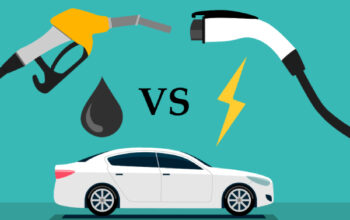How Good Is Your Knowledge About Finding The Right Batteries For Your Use?
How Do You Identify The Vital Battery Metrics?
It does take a little extra information or awareness to know what kind of batteries to choose for each application. The application could be for a simple battery-operated torch or for a big operation like an electric car. How many of us know that for electric car batteries, the internal cell resistance is minimized because it delivers a lot of power for the car to move? Batteries are marketed with attractive taglines like Long Life, High Performance, Heavy Duty, Fast Charge, and so much more.
However, the battery industry is careful not to use such marketing terms to inform buyers about the performance and the other specifications. In this article, we shed light on the basic parameters used to characterise batteries and what to look out for when buying batteries for several purposes.
What To Look Out For?
#1. Battery operating voltage
Battery operating voltage varies with aqueous or water-based batteries and lithium-based batteries. Water-based batteries use lead acid, nickel metal hydride and zinc carbon. The voltage of these batteries ranges from 1.2 to 2 Volts. Operating on organic electrolytes, lithium batteries have a higher voltage of 3.2 to 4 Volts. Due to this higher voltage, a single lithium battery is enough to charge small devices like clocks.
#2. Battery capacity
In simple terms, battery capacity is the discharge current that the battery can provide within a limited amount of time. A nickel metal battery and a lithium-ion battery may discharge the same amount of current. However, since lithium-ion has a higher voltage, it will increase energy. Manufacturers mention battery capacities with discharge rate, temperature and cut-off voltage. But as a consumer, it is also important to look into the drain rates. Batteries that power construction tools or work as automobile starters provide rapid discharge with high drain rates.
#3. Single-use or rechargeable batteries
This is one of the easiest parameters that most consumers can relate with. For applications with intermittent uses such as toys, hearing aids, torch lights, and watches, a primary or single-use battery is the preferred option. But for devices that will be used for a longer time such as laptops, smartphones, smartwatches, etc, a rechargeable battery is a more suitable choice.
#4. Temperature range of the battery
Water-based batteries cannot operate 0 degrees Celsius. Alkaline batteries also exhibit approximately the same decline in capacity. The only hope is the lithium-ion battery that can operate at extremely low temperatures of -40 degrees C. Lithium-based batteries also tend to explode as a result of overcharging or due to short circuits.

Other important battery metrics
While the above-mentioned aspects require a bit of expert advice and guidance, the following measurable metrics are quite common, thanks to the increase in the use of inverter batteries, and smartphone batteries.
- Sizes and shapes
Batteries are available in standardized shapes such as coin cells, button cells, prismatic cells, pouch cells and cylindrical cells.
- Shelf life
How long does a battery last before it is put to use? Primary batteries are said to have a longer shelf life than secondary batteries. But do not forget that once used, primary batteries have to be replaced. But secondary batteries can go on for years and have the ability to be recharged.
- Cost
Secondary batteries are definitely more expensive than primary batteries. But sometimes, the brand also determines the cost of secondary batteries that are used for smartphones and laptops.
- The takeaway
The fundamental understanding of battery metrics is vital because it helps to arrive at a well-informed decision. Most companies do have expert teams waiting to help you out with every step of the purchase. But being aware of what kind of battery you are buying will simplify the selection process.




